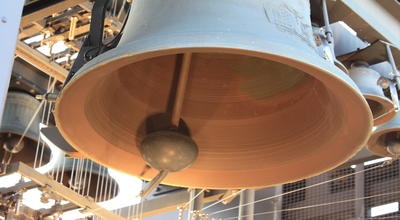Netherlands Carillon restoration begins
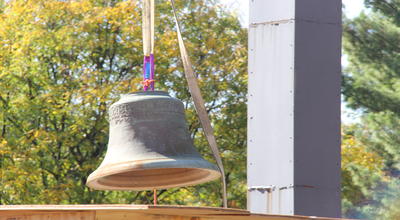
Dignitaries from the Netherlands Embassy @NLintheUSA, including Ambassador André Haspels, joined the U.S. Park Service and guests to kick-off the restoration of the Netherlands Carillon in Arlington, Virginia on Monday. The carillon’s 50 bells were removed by crane beginning Monday and will be restored at a foundry in the Netherlands. The 127-foot high rusting bell tower will be repaired where it stands, a few hundred feet south of the U.S. Marine Corps War (“Iwo Jima”) Memorial in Arlington Ridge Park. The restorations are expected to take at least a year, during which time the carillon, which had sounded Westminster chimes each quarter hour during daylight hours and played the service songs for each branch of the U.S. military at noon and 6 p.m., will stand silent.
The carillon bells were a gift from the Netherlands in 1954 to thank the United States for help liberating the country from Nazi occupation during World War 2. The tower was dedicated May 5, 1960, the 15th anniversary of the Nazi surrender in the Netherlands. To remember Liberation Day, each May 5, the carillon’s bells would chime the Wilhelmus, the national anthem of the Kingdom of the Netherlands.

the carillon's placement in view of the D.C. monuments and memorials.
During Monday’s ceremony, Charles Cuvelier, National Parks Service superintendent of the George Washington Memorial Parkway, and Ambassador Haspels spoke of the friendship between the United States and the Netherlands symbolized by the carillon. As workers used a crane to remove bells from the carillon tower behind them, the two men rang small hand bells to signify the last bells that will ring at the site while the renovation proceeds. The Park Service recorded a video of the second-largest bell being lowered from the carillon Oct. 21.
“For the Dutch,” Ambassador Haspels said, “the Carillon symbolizes our gratitude to the U.S. for assistance during and after World War II and represents the friendship our nations continue to share based on the values of freedom, and democracy.”
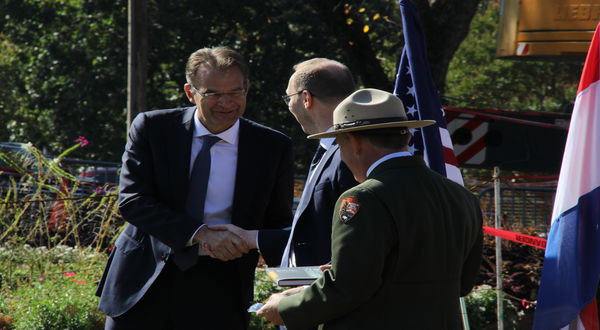
Also speaking at the restoration event Monday was Diederik Oostdijk, professor of English literature at Vrije Universiteit Amsterdam, who serves on the Netherlands Carillon Advisory Committee that helped plan the restoration and who just published a book describing the history and significance of the Netherlands Carillon. At the ceremony, Prof. Oostdijk presented copies of Bells for America: The Cold War, Modernism, and the Netherlands Carillon in Arlington to Ambassador Haspels and Superintendent Cuvelier. The book recounts the history of the Netherlands Carillon, how most Americans are unaware of the monument’s presence so close to other American monuments, how the carillon was allowed to rust into disrepair, and how plans for the carillon’s renewal took shape for 2020, which will mark the 75th anniversary of the Netherlands liberation during World War 2.
The Park Service has talked about restoring the Netherlands Carillon for the past several years when rust began eating away the metal cladding and the bronze bells began showing signs of serious corrosion. The carillon tower closed to the public a few years ago out of safety concerns. Costs to repair the bell tower were estimated in 2016 at $2.7 million, to be funded by the National Park Service from national park admission fees. Costs to restore the bells will be funded privately.
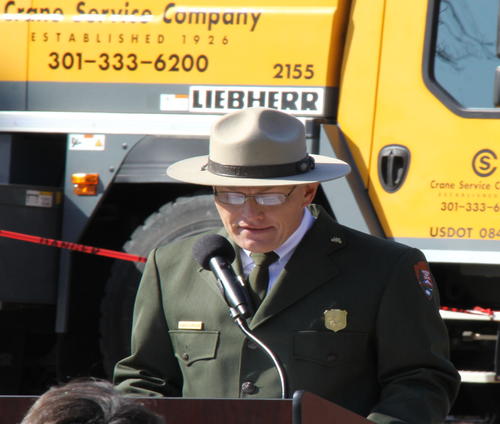
hosted Monday's ceremonies.
Until it closed to public entrance, the carillon tower would be opened to the public during Saturday summer recitals, in which carillon director Edward M. Nassor or an invited guest carillonneur would play a two-hour concert that could be heard throughout the park and adjoining neighborhood. The public could climb to a platform just below the largest bass-note bells as well as the highest platform that houses the carillon’s instrument booth and offers stunning views of the D.C. monuments and memorials to the east, Arlington National Cemetery to the south, and the Marine Corps War Memorial to the north. Summer carillon recitals continued each year until this year, but the public could listen only from the surrounding park grounds.
Internationally recognized for his musical talent and carillon compositions, Nassor has been the Park Service’s director-carillonneur for the Netherlands Carillon since 1987 and also serves as the Washington National Cathedral’s carillonneur. To hear what the Netherlands Carillon sounded like, view this video of Nassor playing John Lennon’s “Imagine” at the final carillon recital of the year.
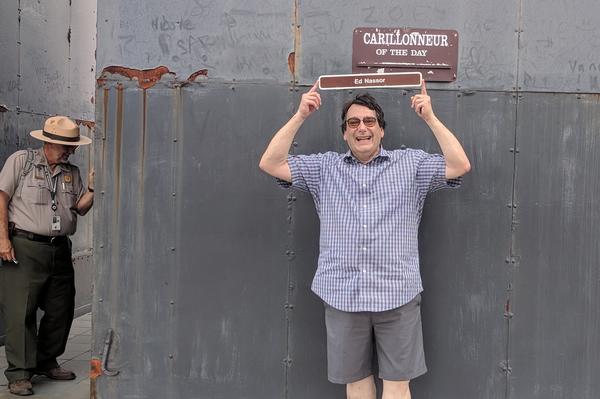
Labor Day, Sept. 2. Rusting metal plates are clearly visible.
The 50 bells, which in total weigh more than 30 tons, were crated this week and removed from the site. They will be shipped to Dutch company Royal Eijsbouts for renovation. Royal Eijsbouts was one of the original foundries that cast the carillon bells and helped perform restorations work in 1995. When Royal Eijsbouts returns the 50 bells, it will add three new bells to fill in missing half-notes that will elevate the Netherlands Carillon to “Grand Carillon” status.
The Netherlands Carillon restoration is part of the Netherlands Embassy’s initiative, “75 Years of Freedom.” The campaign includes a series of events next year to commemorate the end of World War II, highlighting the U.S. contributions to the liberation of the Netherlands, and celebrating Dutch freedom and transatlantic ties since 1945.
Other photos
Here are other photos from Monday’s event, as well as then-and-now comparison photos.
The below photo shows some of the dignitaries and guests from the Netherlands, with the construction crew waiting in the background to start the bell removal. In the front row holding papers, from the left, are: Kingdom of Netherlands Ambassador to the U.S. André Haspels, “Bells for America” author Diederik Oostdijk, Netherlands Defense Attache Air Commodore Paul Herber, and Netherlands Military Attache Col. Paul Elverding.
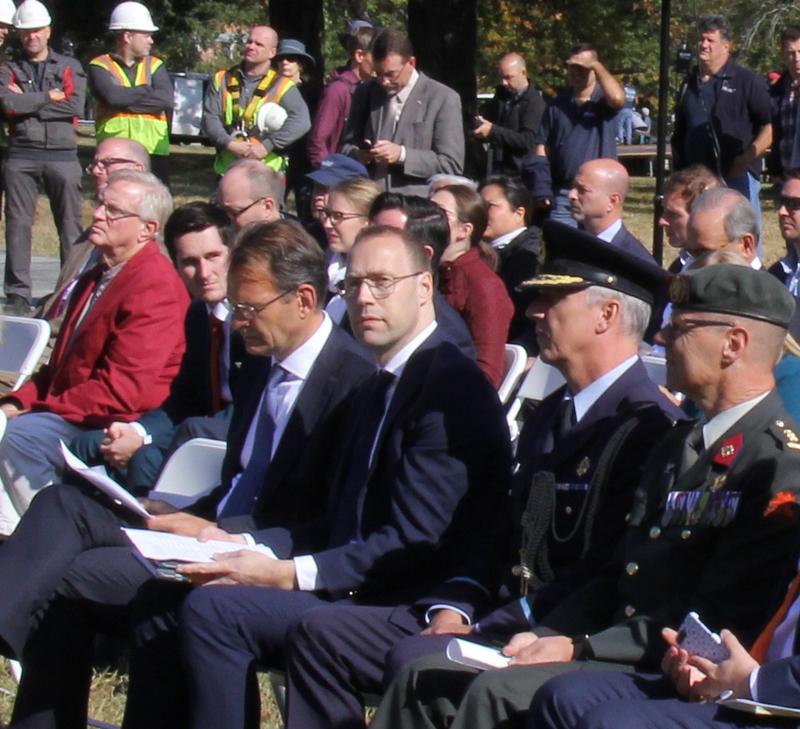
Photos below show the carillon bell tower with bells in August and without bells this week.
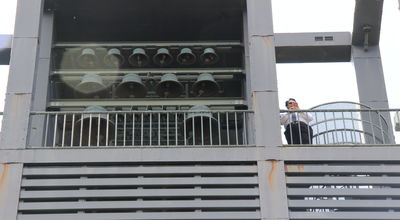
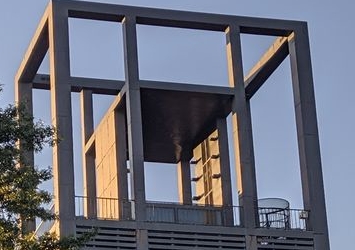
The photo below shows Ambassador Haspels being interviewed after the event by De Telegraaf reporter Jan Postma. The wooden structure in the background encloses one of the two royal lions that mark the entrance to the Netherlands Carillon plaza. The bronze lions, designed by Dutch sculptor Paul Koning, are being protected during the restoration project.
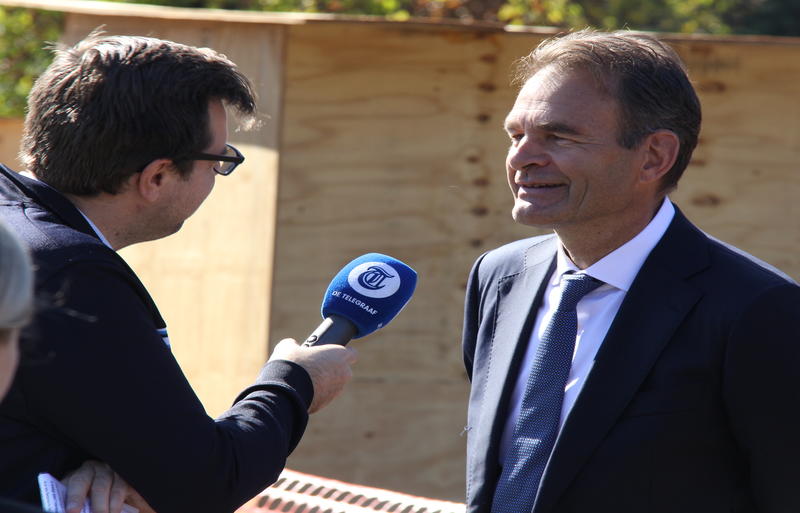
The below photo is of “Bells for America” author Diederik Oostdijk being interviewed, with Ambassador Haspels in the background.
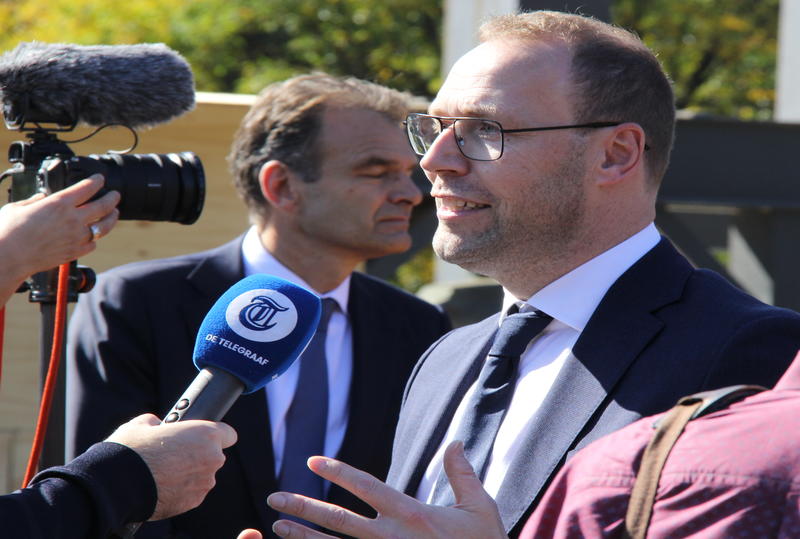
In these photos, Edward Nassor, the Park Service’s director-carillonneur for the Netherlands Carillon since 1987, points out to an attendee that the carillon contains a glass-enclosed structure at the top with a playing console that allows the carillonneur to play the 50 bells much like a piano keyboard. The following photo shows Nassor playing the Netherlands Carillon in 2007 when the tower was open to the public. The pegs on the keyboard are usually struck with the with a lightly fisted hand. The pegs are tied directly to wires that control the bells’ strikers.
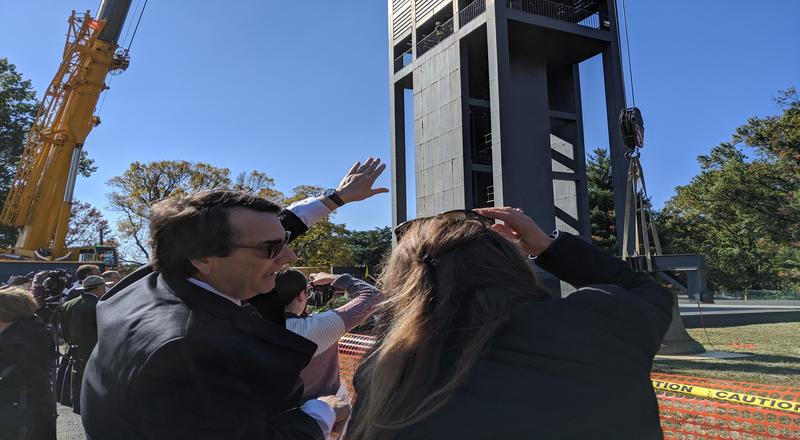
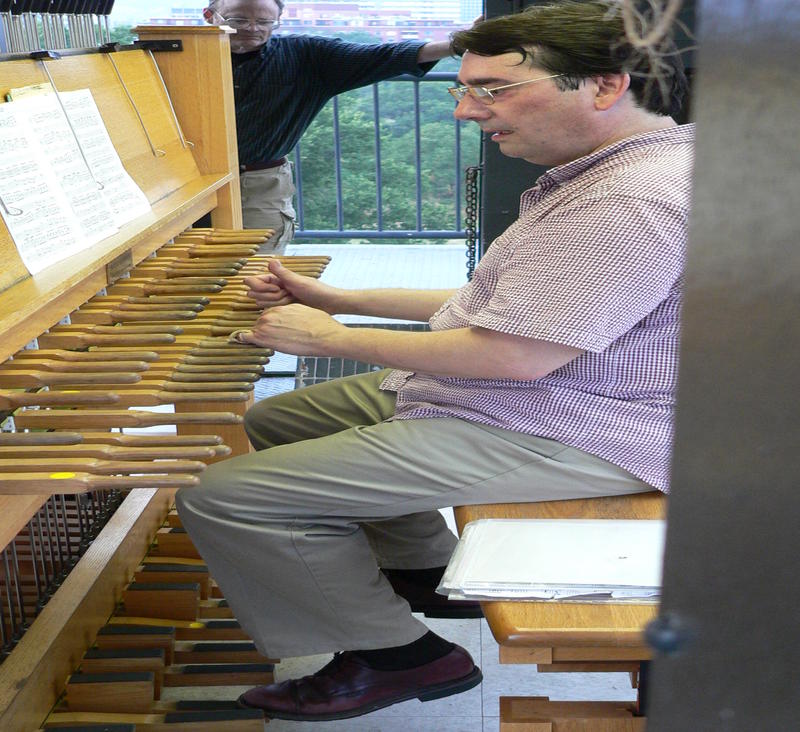
A close-up of one of the Netherlands Carillon’s bells, showing the wires attached to the strikers.
